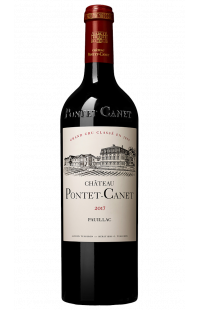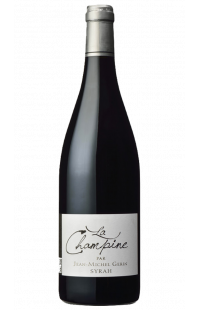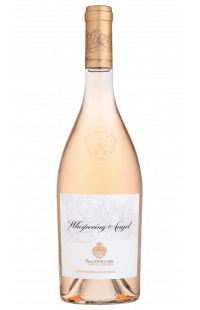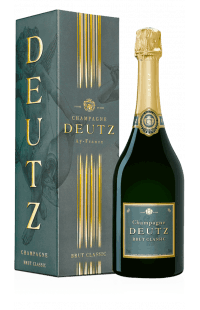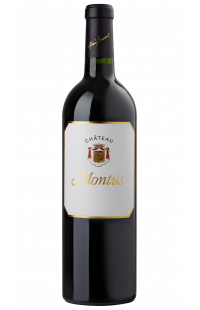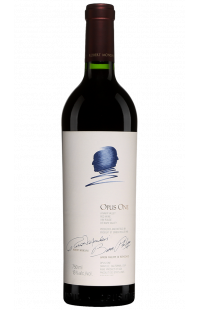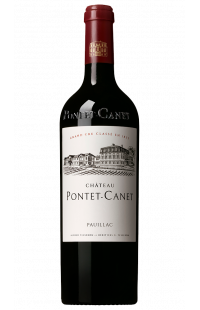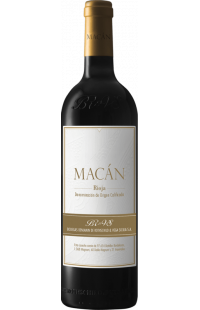- Menu
- All our wines
- Bordeaux
-
Rhône
-
Burgundy
-
Rosés Wines
-
Champagne
- France
-
World
- PRIMEURS
- ORGANIC WINES
D.O Toro
There are 3 products.
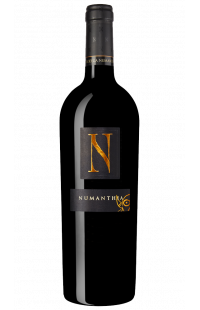
Available in
- Bottle (75cl)
- 52.95€ / bottleTASTING NOTES
Specifications
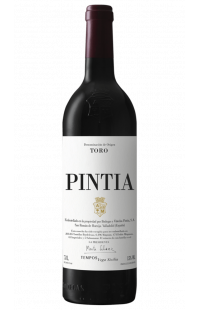
Available in
- Bottle (75cl)
- 70.00€ / bottle- Magnum (1,5l)
- 149.00€ / magnumTASTING NOTES
Wine Advocate
94
J. Suckling
95
Specifications
The Wines of D.O Toro: An Appellation on the Rise
The world of Spanish wines is as vast as it is diverse, with each region offering a distinct character through its grape varieties, traditions, and unique terroir. Among the appellations that have recently gained popularity, the D.O Toro stands out for the exceptional quality of its wines, its rich viticultural heritage, and a unique climate that imparts a strong and powerful character to its wines. This guide dives into the world of D.O Toro, exploring its history, distinct characteristics, and the reasons why these wines deserve a special place in any wine cellar.
History of D.O Toro
The Roman Origins of Viticulture
The Toro region has a winemaking history that dates back to Roman times. The Romans, renowned for their love of wine, introduced vine cultivation to this region as early as the first century BCE. The strategic location of Toro, situated along the Duero River, offered a favorable climate and varied soils, perfect for viticulture. From that time, the reputation of the local wines began to form, laying the foundations of a tradition that would endure for centuries.
Development in the Middle Ages
In the Middle Ages, Toro wines already enjoyed great fame, notably due to their robustness, which allowed for better preservation during long journeys. Toro was an active commercial center, and its wines were widely exported to other regions of Spain and even beyond. Local monasteries, which played a key role in the rise of viticulture in Europe, also contributed to the improvement of winemaking techniques, thus perfecting the quality of the wines produced.
Obtaining the Denomination of Origin
The true turning point for the region came in 1987 when Toro obtained the Denominación de Origen (D.O), an official recognition that guarantees the origin and quality of the wines. This appellation allowed producers to focus on preserving and promoting the unique characteristics of their wines while adopting modern practices to meet the growing demands of the market. Since then, D.O Toro has experienced rapid expansion, both in terms of cultivated area and international recognition.
Geography and Climate
Geographical Location
D.O Toro is located at the far west of the Castilla y León region, mainly encompassing the provinces of Zamora and a small part of Valladolid. This wine region stretches along the Duero River, which plays a crucial role in shaping the terroir. The vineyards of Toro are planted at altitudes between 700 and 1,100 meters, significantly influencing the microclimate and, consequently, the profile of the wines produced.
Extreme Continental Climate
Toro's climate is continental, marked by very cold winters and hot, dry summers, with daytime temperatures that can exceed 35°C (95°F) and cool nights. This thermal contrast benefits the vine, allowing the grapes to mature slowly and steadily while preserving their acidity and concentrating their aromas. However, this climate is also rigorous, with low annual precipitation, forcing the vines to root deeply to find the necessary moisture, thus giving the grapes a great concentration of flavors.
Influence of Altitude on Viticulture
The altitude of Toro's vineyards plays a decisive role in the quality of the wines. At higher elevations, the temperature variations between day and night are more pronounced, enabling the grapes to develop aromatic complexity while maintaining good acidity. Moreover, vines located at higher altitudes are often less susceptible to diseases, as cool nights limit the proliferation of fungi. This results in healthier grapes and purer wines, with an aromatic intensity that characterizes D.O Toro wines.
The Tinta de Toro Grape Variety
Origin of the Grape
The Tinta de Toro is the emblematic grape variety of D.O Toro, a red grape that has evolved locally over centuries. Although it is often compared to Tempranillo, Tinta de Toro is a genetic mutation specific to this region, giving it unique characteristics. This grape has adapted to the extreme climatic conditions of Toro, developing thick skin that protects the grapes from intense sun rays and frequent droughts.
Characteristics of Tinta de Toro
Tinta de Toro is distinguished by its dark, almost black color and powerful tannins. Wines produced from this grape are generally full-bodied, with a firm tannic structure and a high concentration of aromas of black fruits, licorice, and cocoa. On the palate, they reveal great complexity, combining power and elegance, with remarkable aging potential. This grape produces wines that can be enjoyed young for their fruity intensity but also gain depth and subtlety over time.
Differences with Tempranillo
Although Tinta de Toro and Tempranillo share a lineage, they exhibit notable differences. Tinta de Toro has thicker skin and higher polyphenol content, resulting in more structured and tannic wines. Additionally, Toro's unique terroir imparts Tinta de Toro with aromas and depth not found in other Tempranillo variants cultivated elsewhere in Spain. These distinctions make D.O Toro wines truly unique and sought after by wine enthusiasts worldwide.
Soils and Terroir
Soil Composition
The soils of the Toro region are primarily composed of sand, clay, and limestone, with layers of gravel and pebbles on the surface. These soils are generally low in organic matter, forcing the vines to delve deep to find the necessary water and nutrients. This natural constraint leads to reduced yields but a significant increase in grape quality, concentrating aromas and flavors.
Influence on the Vine
The sandy soil of Toro plays a crucial role in protecting the vines from phylloxera, an insect that devastated many European vineyards in the 19th century. Due to this natural resistance, some of the oldest vines in the region, dating back over 100 years, still produce grapes of exceptional quality. These old vines, with their deep roots, can extract unique minerals from the lower soil layers, adding an extra dimension of complexity to the wines.
Yield and Aroma Concentration
The challenging conditions of Toro, combined with poor soils, result in very low yields, often well below the national average. However, this low yield is an asset for producers, as it allows for concentrated aromas and the production of wines with unparalleled intensity and depth. The grapes, rich in sugar and polyphenols, give rise to powerful wines capable of aging in the bottle for many years while retaining their structure and complexity.
The Famous Estates of Toro
Introduction to Some Estates
Toro is now home to over 40 wineries, each with its own philosophy and distinct style. Among the most famous estates are Bodegas Pintia, an ambitious project by the Álvarez family, owners of Vega Sicilia, which helped put Toro on the map of great wines. Other notable estates include Bodegas Numanthia, known for its opulent and concentrated wines, and Bodegas Fariña, one of the oldest in the region, recognized for its commitment to tradition and quality.
The Best Bottles
Wine enthusiasts often seek out prestigious bottles from Toro, such as Numanthia, a robust and complex wine that perfectly illustrates the aging potential of Tinta de Toro. Other examples include San Román, an elegant and structured wine, or Gran Colegiata from Fariña, a tribute to the region's old vines. These wines stand out for their depth, aromatic richness, and ability to evolve over time, offering an unforgettable tasting experience.
Visits and Wine Tourism
For wine lovers, a visit to the Toro region is an essential experience. Many estates offer guided tours, providing insight into their winemaking process and tastings of their best vintages. Visitors can also explore the picturesque landscapes of the region, discover historical underground cellars, and taste local products, all in an authentic and welcoming setting. Wine tourism in Toro is booming, attracting more and more travelers in search of wine discoveries.
Winemaking and Techniques
Winemaking Process
The winemaking of Toro wines follows a rigorous process that combines tradition and innovation. After harvesting, often done by hand to ensure grape quality, the grapes are sorted and destemmed before being placed in vats for fermentation. This phase, crucial for developing aromas and structure, is often prolonged to maximize the extraction of tannins and color. The wines are then aged in oak barrels, usually for 12 to 24 months, to develop secondary aromas and increased complexity.
Traditional vs. Modern Techniques
D.O Toro is an excellent example of the coexistence between traditional and modern techniques. While ancestral methods are respected, notably the use of old vines and manual harvesting, winemakers do not hesitate to adopt modern technologies to improve winemaking precision. The use of French and American oak barrels, temperature-controlled fermentation, and advanced extraction techniques allow for wines that combine power and elegance while respecting the essence of Toro's terroir.
Impact of Barrel Aging
Barrel aging plays an essential role in the development of Toro wines. Oak barrels impart woody notes, vanilla, and spices while softening the robust tannins of Tinta de Toro. The choice between French oak, known for its finesse and subtle aromas, and American oak, which imparts more pronounced vanilla and coconut aromas, allows producers to create varied wine profiles. This aging also brings a more complex structure to the wines, making them suitable for prolonged aging in the bottle.
Tasting D.O Toro Wines
Flavor Profile
D.O Toro wines are characterized by their intensity and power. On the palate, they offer an explosion of ripe black fruit flavors, such as blackberry and plum, often accompanied by spicy notes, licorice, and cocoa. Their tannic structure is robust but well-integrated, offering a long finish that leaves a lasting impression. Thanks to their balance between acidity and alcohol, these wines are both full-bodied and elegant, capable of improving further with age.
Tasting Tips
To fully enjoy a Toro wine, it is recommended to decant it before tasting, especially if it is young, to allow the aromas to develop and the tannins to soften. Serving at a temperature slightly below room temperature, around 16-18°C (61-64°F), highlights its aromatic complexity. Older wines should be handled carefully, as they may contain sediment, an indication of their age and quality.
Food Pairings
Toro wines are ideal companions for rich and flavorful dishes. Their structure and power pair perfectly with grilled red meats, game, or saucy dishes with mushrooms. Aged cheeses, such as Manchego, also bring out their fruity intensity. For fans of Spanish cuisine, a lamb stew (cordero) or roasted suckling pig (cochinillo asado) pairs wonderfully with the complexity of a Toro wine.
D.O Toro in the Global Market
Evolution of Popularity
Over the past two decades, D.O Toro wines have seen a significant increase in popularity, both in Spain and abroad. This success is largely due to the consistent quality of the wines produced, but also to the growing interest in lesser-known appellations with high potential. Wine critics and sommeliers worldwide have begun to recognize Toro wines for their exceptional value for money, leading to increased demand in international markets.
Exports and International Market
Toro wines have managed to establish themselves in international markets, notably in Europe and North America. This expansion has been facilitated by producers' commitment to maintaining high-quality standards while exploring new markets. The United States, the United Kingdom, and Germany are among the main importers of Toro wines, where they are appreciated for their unique character and robustness. Continuous international promotion efforts, along with awards obtained in wine competitions, continue to strengthen Toro's presence on the global stage.
Pricing and Accessibility
While some Toro wines can be expensive due to their limited production and superior quality, the region also offers a range of more accessible wines suitable for various budgets. Entry-level wines, often from younger vineyards or less complex blends, allow enthusiasts to discover the essence of Toro without sacrificing quality. This accessibility, combined with growing recognition, makes Toro wines a popular choice for wine lovers worldwide.
Trends and Innovations
Organic and Biodynamic Wines
With consumers' preferences shifting toward more sustainable products, many Toro producers are turning to organic and biodynamic viticulture. These methods, which involve respectful management of the vine and environment, result in more authentic wines that faithfully reflect the terroir. Organic Toro wines are rapidly expanding, offering consumers more natural options without compromising quality.
Innovations in Winemaking
Toro winemakers are also adopting innovative techniques to improve the quality and complexity of their wines. Among these innovations are the use of concrete vats for fermentation, allowing slow and controlled micro-oxygenation, or experimenting with oak barrels from different origins to refine aromas. These modern approaches, combined with deep respect for local traditions, keep Toro at the forefront of wine production.
Young Winemakers and Renewal
The new generation of Toro winemakers brings a breath of fresh air to the appellation. These young producers, often trained in the best viticulture schools or having worked in other wine regions worldwide, bring innovative ideas and a modern vision to wine production. Their passion for the terroir and desire to push traditional boundaries contribute to the renaissance of D.O Toro, attracting the attention of critics and consumers seeking authentic and contemporary wines.
Conclusion and Reflections
Why Choose a Toro Wine?
Choosing a Toro wine means opting for an authentic tasting experience, rich in flavors and history. The wines from this region are the fruit of a unique terroir, ancient viticultural tradition, and know-how passed down through generations. Their powerful character, aging potential, and aromatic complexity make them suitable for many occasions, whether for a dinner with friends or celebrating a special event. Toro is undoubtedly one of the appellations to watch closely, both for its quality and its potential for evolution.
The Future of D.O Toro
The future of D.O Toro looks promising. With growing international recognition, commitment to quality and sustainability, and a new generation of winemakers ready to innovate, Toro is well-positioned to continue evolving and developing. Wine enthusiasts can expect to discover new expressions of this unique terroir, with wines that will continue to surprise and captivate with their richness and authenticity.
FAQs about D.O Toro Wines
What is the difference between Tinta de Toro and Tempranillo? Tinta de Toro is a specific variant of Tempranillo, adapted to the extreme climatic conditions of the Toro region. It is distinguished by thicker skin, higher concentration of tannins and aromas, resulting in more structured and powerful wines.
Which are the best Toro estates to visit? Among the most renowned Toro estates are Bodegas Pintia, Bodegas Numanthia, and Bodegas Fariña. Each of these estates offers a unique tasting experience, highlighting different aspects of Toro's terroir.
How are Toro wines made? Winemaking in Toro follows a meticulous process, combining tradition and modernity. Grapes are usually hand-harvested, sorted, and fermented in vats before aging in oak barrels to develop complex aromas and well-integrated tannic structure.
What foods pair well with Toro wines? Toro wines pair well with grilled red meats, game, saucy dishes, and aged cheeses. Their power and tannic structure make them ideal companions for rich and flavorful dishes.
Are Toro wines expensive? The prices of Toro wines vary depending on the quality and reputation of the estate. While some bottles can be costly, there are also many accessible wines offering excellent value for money.
What climatic factors influence Toro wines? Toro's extreme continental climate, with hot, dry summers and cold winters, plays a crucial role in grape maturation. The altitude of the vineyards and temperature variations between day and night also contribute to the complexity and balance of Toro wines.
Conclusion
The wines of D.O Toro are a true treasure of Spanish viticulture, offering aromatic richness and power that set them apart from other regions. Their history, unique terroir, and producers' commitment to maintaining quality while innovating make Toro an appellation on the rise. Whether you are an experienced wine enthusiast or a curious novice, Toro wines deserve your attention and a place in your wine cellar.
